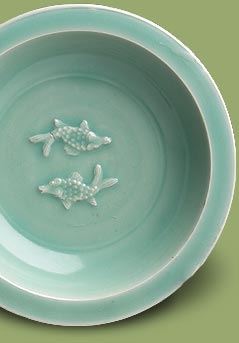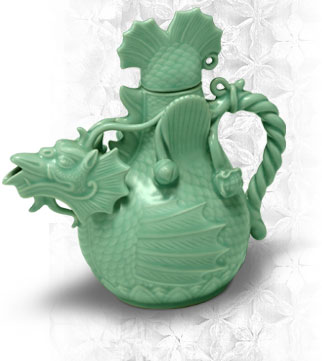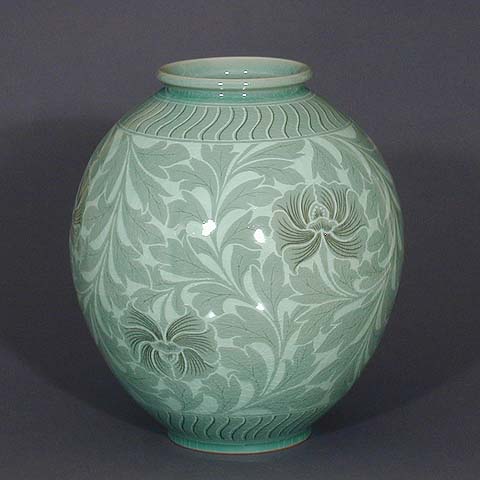Celadon
Celadon, even celadon ware, is after his " celadon " ( gray-green ) glaze called Chinese stoneware of the 9th to the 15th century, the few came to Europe in the Middle Ages. The oldest imported Seladonschale is located in the Hessian State Museum in Kassel and was located approximately from 1420 in the possession of the Counts of Katzenelenbogen. Celadon ware is often decorated with reliefs.
History
The greenish or bluish glaze shine through the debris in case of early pieces. In later models, the glaze is grass green or dark olive green. The typical glaze of the Ming period (from 1368 ) is dirty green and undurchscheinend. Celadon ware was popular in Asia, because it reminds in color on jade. The color is produced by reduction of ferrous oxide in the feldspar glaze during firing.
End of the 13th century, this form of ceramic production was exported to the south to Thailand, when King Ramkhamhaeng of Sukhothai even the relevant techniques brought back from a trip to China. The ceramic industry of Sukhothai and Sawankhalok has been preserved in Si Satchanalai today.
Naming
The name " celadon " comes from the hero of the novel L' Astrée by Honoré d' Urfé from the year 1610. The dull green garment of the shepherd Celadon was for a time fashion and so coined the name of the color. Until the 19th century the term was " tenderly as celadon " literally similar to " beautiful as Adonis" or " strong as Hercules ."
Further Reading
- G. St. G. M. Gompertz: Celadon Wares. London 1968
- B. Harrison: Oriental Celadon. Leeuwarden 1978
- M. Tregear: The ceramics of the Song period. Munich 1982, ISBN 3-7774-3390- X
- J. Ayers: The pottery of the Far East: China, Vietnam, Korea, Japan. Freiburg, Basel, Vienna 1984, ISBN 3-451-20199-2
- Roxanna M. Brown: The Ceramics of South - East Asia. Their Dating and Identification. 2nd edition. Art Media Resources, Chicago 2000, ISBN 1-878529-70-6.










